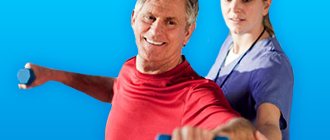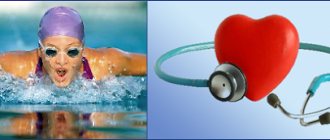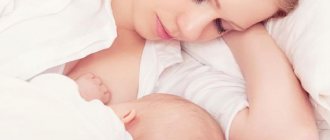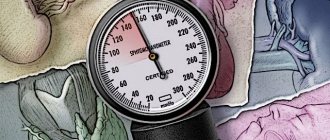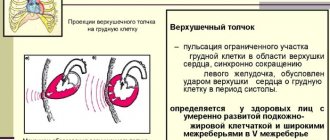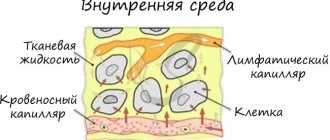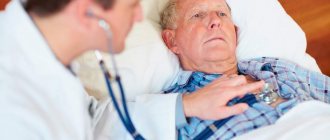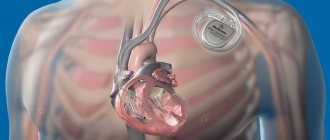The main sign of hypertension or hypertension is elevated blood pressure. Patients with this diagnosis require constant treatment, since hypertension is one of the main causes of mortality.
A sharp rise in blood pressure often provokes heart attacks and strokes. This pathology negatively affects the functioning of the kidneys and heart, and causes irreversible visual impairment. There are many unfavorable factors that can trigger the pathological process, but the main reasons are excess body weight, bad habits and endocrine disorders.
A set of exercises adapted for hypertension
The set of exercises depends on the degree of hypertension (that is, blood pressure numbers). So, with grade 1, the set of exercises can be performed immediately while standing.
Exercise therapy for stage 2 hypertension is performed from supine starting positions in the first 3-5 days, then proceeds to performing sedentary exercises and standing exercises. The same principle is observed for degrees 3 and 4, only with each degree the time of the lying and sitting phases lengthens (the specific time is called by a cardiologist who knows how long you have been sick and what features of the course of the disease are observed in you).
Physiotherapy exercises for hypertension of 1st and 2nd degree include such exercises included in 3 complexes.
Set of exercises No. 1
Used when bed rest is prescribed. All exercises are performed lying on your back.
- Lying on your back, without helping yourself with your hands, first pull your toes toward you (toward your knees), then away from you. Repeat 6-8 times, pace – slow, breathing – arbitrary.
- Slowly bend your fingers into fists and straighten them 6-8 times.
- Bend your arms at the elbow joints, placing your hands on the shoulder joints: the right hand on the right shoulder, the left hand on the left. As you inhale, spread your elbows (like wings) to the sides. Exhale: first straighten your arms at both joints, then place them along your torso. The pace is slow. Repeat – 2-3 times.
- Place your hands along your body, palms down. Inhale – turn your hands with your palms up. Exhale - raise your arms forward and up, and then slowly stretch your hands to your knees, tensing the muscles of your body and legs. There is no need to sit down, just raise your head and shoulders. Execution is slow, repeat 2-3 times.
- Breathe calmly for 2 minutes.
- Take turns bending, without lifting from the surface of the bed, one or the other leg at the knee, sliding them along the bed. The pace is slow. Repeat – 4-6 times.
The arms lie along the body, palms down, the legs are straight, slightly spread to the sides. As you inhale, turn your arms with your palms up and move them slightly to the sides, at the same time turn your straight feet with your toes away from each other. As you exhale, turn your arms with your palms down and your feet with your toes inward. Repeat 4-6 times.
Extend your arms to the sides. Bend your knees, lower them onto the bed, first to the right, then to the left, while turning your head in the opposite direction. Slowly. Repeat 4-6 times.- Bend your knees. As you inhale, raise your right hand up, and as you exhale, reach it towards your left knee. Repeat with your left arm and right knee. Repeat 4-5 times.
Set of exercises No. 2
It is performed entirely in the starting position while sitting on a chair.
- Lean against the back of the chair, fold your hands on your knees. As you inhale, raise your arms to your shoulders, spread your elbows to the sides. As you exhale, lower your hands to your knees. The pace is average. Repeat 4-5 times.
- Roll your feet from heels to toes, gradually spreading your legs to the sides. At the same time, clench your hands into fists and unclench them. Repeat – 10-15 times.
- As you inhale, raise your arms forward and up; as you exhale, lower your arms to the sides. Repeat 2-3 times.
- Slide both feet back and forth without lifting your feet off the floor. Repeat 6-8 times.
- As you inhale, spread your arms to the sides, as you exhale, place your hands on your knees and lean forward. Repeat 3-5 times.
- Hands along the body. Raise your right shoulder up and your left shoulder down. Now swap them. Repeat 3-5 times at an average pace.
- Arms to the sides - inhale, lift your right knee to your chest with your hands. As you exhale, release it. Repeat the same with your left leg. Repeat 4-6 times.
- Calm breathing – 2 minutes.
Set of exercises No. 3
Some exercises have already been performed in previous complexes, others are too simple and therefore are not accompanied by illustrations.
- Sitting on a chair. As you inhale, bring your hands to your shoulders. As you exhale, arms down. The pace is average, repeat 4-5 times.
- Sitting on a chair. Roll from heel to toe, simultaneously spreading your legs to the sides, clenching your fingers into fists. Repeat 15-20 times at an average pace.
- Sitting on the edge of the chair. As you inhale, raise your arms, stretch your legs forward, but do not lift them. Exhale – arms down, legs bent at the knees. Repeat 4-5 times
- Sitting on a chair. The feet slide along the floor, and at the same time the arms move as if walking. Repeat 4-5 times.
- From a sitting position on a chair. Inhale – raise your arms up, stretch them and stand up. Sit down - exhale. The pace is average, repeat 4-5 times.
- Walk around the hall for 2-3 minutes.
- Standing behind the back of a chair, placing your hands on it, make circular movements in the shoulder joints in one direction and the other. Repeat 10-15 times.
- Standing behind the back of the chair, but with your side to it, perform swing movements in the direction opposite to the chair, first with one leg, then with the other, 10-15 times at an average pace.
- Stand behind the back of a chair, with your side to it (in case you get dizzy during the execution). Inhale – arms up. Exhale – arms down and bend forward slightly (the exercise may be contraindicated in case of a hernia of the lumbar spine).
- Rotate your body clockwise and then counterclockwise. Feet shoulder-width apart (exercise may be contraindicated if you have a hernia of the lumbar spine).
- Rest - walk around the hall, while inhaling, raising your arms up through your sides, and as you exhale, lowering them.
V.A. Fedorov recommends doing the following exercise:
Sit on a hard or medium hard surface. Lower your arms along your body and rest with your palms (if the surface is hard) or fists (if the surface is medium hard). Your arms need to be straightened. As a result, part of the load on the spine will be removed. Next you need to do slight shoulder turns. The head and pelvis should remain motionless. These movements create a pump effect. The duration of the exercise is as long as possible until fatigue appears in your hands. It should be used every hour or whenever possible, and also after sleep, before getting out of bed.
The exercise is very effective, as it allows you to restore and strengthen blood and lymph flow, helps relieve swelling and relieve overstrained spinal muscles. After this exercise, you need to stand up and stretch gently, raising your arms up, swaying slightly and stretching more, first with one hand, then with the other.
Hypertension of degrees 3 and 4 requires individual consultation regarding a set of exercises. Typically, in these cases, only “lying down” exercises can be used.
Unfortunately, the microvibration imparted by exercise is not enough to speed up the process of normalizing blood pressure. Exercise therapy for hypertension has the best results when combined with phonation in the kidney area (Kovlen D.V., Fedorov V.A. The influence of vibroacoustic effects on exercise tolerance in people with mild arterial hypertension - St. Petersburg, Military Medical Academy, 2002) .
Swimming for hypertension
The author of the innovative and energy-efficient Total Immersion swimming style, Terry Laughlin (USA), cites the results of a study conducted in 1988 by cardiologists and sports physiologists at the University of Texas Dallas Medical Center, which found that “systematic swimming lowers blood pressure and increases endurance " At the same time, from the point of view of energy costs, a swim of 1.5 km is equal to a run of 6.5 km. (Full Immersion by Terry Laughlin and John Delves, 5th edition, 2021)
Swimming can be considered a candidate for the title of ideal sport because:
- ensures low trauma and absence of vibration loads on the musculoskeletal system (physical exercises in water allow you to avoid the force of gravity and it becomes possible to eliminate shock loads on the joints that occur during running, cycling and other sports),
- in an aquatic environment, it is impossible for the body to overheat, so you can train with greater loads than on land,
- a large number of muscles are involved
- the heart and lungs work efficiently,
- muscle endurance and strength increase,
- water is gentle on muscles (relaxation and uniform resistance help relieve muscle tension and pain caused by training on the ground),
- flexibility improves and the mobility of the joint apparatus increases,
- swimming is one of the ways of hardening,
- stress resistance increases and psychological state improves due to a feeling of weightlessness and freedom,
Swimming is an equal opportunity sport! If you are overweight, disabled or injured - factors that prevent you from actively moving, you can still swim.
Created by Terry Laughlin, the Full Immersion or Double Stroke crawl style allows swimmers to adopt a more streamlined shape to reduce drag in the water, allowing them to swim faster, longer and with less effort.
- Using the laws of physics that are conciliatory to movement in water, the swimmer takes on a maximally elongated horizontal shape throughout, which allows him to increase speed.
- This style of swimming also takes into account a number of benefits borrowed from yoga and tai chi (Chinese martial art and gymnastics), and trains “mindful” swimming with constant control of movements and at the same time a state similar to meditation.
- The unique technology of movements in water, due to the inclusion of large muscles of the body and the correct application of effort, allows you to avoid joint injuries even during long swimming.
As the author of the style says, in the end you should feel “like a fish in water”!
Contraindications to exercise therapy
Exercise therapy is contraindicated for:
increased blood pressure: upper - above 220, or lower - above 120 mm Hg. Art., even if the person feels well;- a decrease in blood pressure below 90/50 mm Hg. Art.;
- mental disorders when contact with a person is difficult;
- the progressive course of hypertension, when blood pressure numbers, despite modern treatment of the disease, continue to “creep up”;
- the appearance of shortness of breath or swelling;
- pulse more than 100 beats per minute or less than 50 beats per minute;
- recorded frequent attacks of atrial fibrillation or any paroxysmal tachycardia;
- if the ECG shows signs of ischemia (when the heart suffers from a lack of oxygen);
- frequent extrasystoles (extraordinary contractions of the heart);
- diagnosis of “2nd or 3rd degree atrioventricular block” made by ECG;
- if hypertensive crises (sudden increases in blood pressure) are often observed;
- decrease in the level of red blood cells less than 2.5-3*1012/l (according to a general blood test);
- a large number of leukocytes (more than 11*109/l) in the general blood test;
- ESR in the general blood test is more than 20-25 mm/h.
The last three indicators indicate that a person is at risk of bleeding, which can be aggravated by exercise.
It is worth reducing the load and taking long breaks between exercises if:
- the face turns red or pale;
- feels dizzy;
- breathing quickens or becomes difficult to breathe;
- a person staggers when walking;
- your head or legs started to hurt;
- it feels like the heart is “pounding”;
- the person follows commands inaccurately or walks unevenly.
Be sure to count your pulse and measure your blood pressure before and after exercise. Normal - if the pulse increases by no more than 25 beats per minute from the original, and the pressure increases by 5-20 mm Hg. Art. If the upper pressure has decreased and the lower pressure has increased, this is an incorrect reaction of the body, which indicates an inadequate load, especially if there is an increase in heart rate above 110 beats per minute.
Phonics is a modern effective non-drug method of treating and preventing hypertension
The effectiveness of the method is confirmed by medical research, clinical practice and reviews from doctors. Treatment and prevention of hypertension is carried out using compact medical devices of the Vitafon series. The advantage of the method is the ability to independently perform procedures at home, as well as the absence of side effects and a small number of contraindications.
You can read more in the article - “Effective treatment of hypertension at home.”
More information about the devices and their costs
List of used literature
- Peshkova O.V. Physical rehabilitation for diseases of internal organs - Kharkov, 1990.
- Kokosov A.N., Streltsova E.V. Exercise therapy in the rehabilitation of patients with lung and heart diseases - L: Medicine, 1984.
- Terry Laughlin and John Delves. Full immersion. 5th edition, 2016
Author of the article: intensive care physician M.S. Krivega (Regional Infectious Diseases Clinical Hospital, Zaporozhye)
You can ask questions (below) on the topic of the article and we will try to answer them competently!
Physical rehabilitation for hypertension; educational and methodological material on the topic
PHYSICAL REHABILITATION FOR HYPERTENSION (H)
Hypertension is a chronic disease that affects various systems of the body, characterized by an increase in blood pressure above normal, the most common disease of the cardiovascular system. It has been established that those suffering from hypertension account for 15 - 20% of the adult population according to various epidemiological studies. HD quite often leads to disability and death. The underlying cause of the disease is arterial hypertension. Arterial hypertension is one of the main risk factors for the development of coronary artery disease, cerebral stroke and other diseases.
Hypertension is showing a steady upward trend and this is primarily due to the fact that hypertension is a disease of civilization and its negative aspects (in particular, the information boom, the increased pace of life, hypokinesia, etc.). All this causes neuroses, including cardiovascular ones, negatively affecting the body and its regulatory mechanisms, including the regulation of vascular tone. In addition, neuroses and stress lead to excessive release of catecholamines into the blood and thereby contribute to the development of atherosclerosis.
Causes and clinical course of headache.
The causes of hypertension are atherosclerotic lesions of peripheral vessels and disruption of neuroendocrine regulation. There is no complete clarity in understanding the etiology of hypertension. But the factors contributing to the development of the disease are well known:
- neuropsychic overstrain, emotional stress,
- hereditary constitutional features,
—occupational hazards (noise, eyestrain, increased and prolonged concentration of attention),
- excess body weight and dietary habits (excessive consumption of salty and spicy foods),
- smoking and alcohol abuse,
— age-related restructuring of regulatory mechanisms (juvenile hypertension, menopause in women),
- skull injuries,
- hypercholesterol inemia,
- kidney disease,
- atherosclerosis,
- allergic diseases, etc.
Since the level of blood pressure is determined by the ratio of cardiac (minute) blood output and peripheral vascular resistance, the pathogenesis of hypertension is formed due to changes in these two indicators, which can be the following:
1) increased peripheral resistance due to either spasm or atherosclerotic lesions of peripheral vessels;
2) an increase in cardiac output due to intensification of its work or an increase in the intravascular volume of circulating blood (increase in blood plasma due to sodium retention);
3) a combination of increased cardiac output and increased peripheral resistance.
Regardless of the clinical and pathogenetic variants of the course of hypertension, an increase in blood pressure leads to the development of arteriosclerosis of three main organs: the heart, brain, and kidneys. The outcome of hypertension depends on their functional state.
Degrees, forms and symptoms of headache.
The latest version of the classification of arterial hypertension, recommended by WHO experts (1962, 1978, 1993, 1996), provides for the identification of three stages of arterial hypertension (AH), which are preceded by borderline hypertension (labile or transient hypertension) of three degrees of severity.
I. Classification according to blood pressure level:
- normal blood pressure - below 140/90 mm Hg. Art.;
- borderline hypertension - blood pressure is in the range of 140/90 - 159/94 mm Hg. Art.;
- arterial hypertension - blood pressure is 160/95 mm Hg. Art. and higher.
II. Classification by etiology:
— primary arterial hypertension (hypertension);
- secondary (symptomatic) hypertension.
Based on the nature of the progression of symptoms and the duration of hypertension, hypertension is divided into: benign hypertension (slowly progressing or non-progressive) and malignant hypertension (rapidly progressing). There are also crisis and non-crisis headaches. There is, in addition, a division of hypertension into three main degrees: mild (mild), moderate and severe, taking into account the severity and degree of sustainability of the increase in blood pressure. Each of these three degrees is characterized by its own limits of increase in diastolic blood pressure: 90/100, 100/115, 115 mm Hg. Art. respectively.
The central symptom - arterial hypertension syndrome - is an increase in blood pressure, measured by the auditory method, according to Korotkov, from 140/90 mm Hg. Art. and higher. Main complaints: headaches, dizziness, blurred vision, pain in the heart, palpitations. Patients may have no complaints. The disease is characterized by an undulating course, when periods of deterioration are replaced by periods of relative well-being. Hypertension can lead to a number of complications: heart failure, coronary artery disease, stroke, kidney damage. The course of hypertension in many patients is complicated by hypertensive crises. They are characterized by a sharp rise in blood pressure and can occur at all stages of the disease, and nausea, vomiting, and blurred vision may occur.
1. Drug treatment
Main groups of drugs for hypertension
Currently, there are many types of medications that are prescribed for hypertension. Each of them acts on a specific link in the pathogenesis of the disease.
Diuretics
Diuretics, or diuretics, have been used to treat hypertension for a long time. Their main effect is that they eliminate excess fluid in the patient’s body and reduce the total volume of blood, reducing its pressure on the inner wall of blood vessels. Drugs of this series are used in combination with other drugs.
Many diuretics have side effects and remove potassium from the body, which negatively affects the functioning of the heart. Therefore, they are taken together with potassium-containing drugs. The most commonly prescribed drugs are spironolactone, indapamide, and hydrochlorothiazide. Strong drugs such as furosemide are used only in emergency cases and are not intended for regular use.
Beta blockers
Drugs that eliminate the influence of beta-adrenal receptors, which in the human body are located in the heart and bronchi, so they are not recommended for use if you are prone to asthmatic attacks. Among them there are selective drugs that can only affect the heart muscle and blood vessels and do not have such contraindications.
The effect of beta blockers is to dilate blood vessels, reducing the load on the heart and heart rate. They are best taken by patients who have high blood pressure combined with angina and tachycardia. Beta blockers should not be used if you have a low heart rate or a medical condition such as diabetes.
The main representatives of this group are: metoprolol, betaxolol, nebivolol, carvedilol.
Calcium channel blockers
They do not allow calcium ions to enter the cells of the heart and blood vessels. As a result, they relax, the pressure decreases, and the phenomenon of arrhythmia is eliminated.
Representatives of this class are verapamil and diltiazem. Amlodipine and nifedipine do not have an antiarrhythmic effect, so their use is not recommended for arrhythmia. At the moment, most experts consider the use of nifedipine inappropriate, since it acts for a short time and has significant side effects.
The main representatives of this group have a good effect on hypertension and have a long-lasting effect. The most common side effect of these drugs is the occurrence of swelling in the ankles, which goes away when the dosage is reduced, or when the drugs are used in combination with other groups. If swelling does not go away, then this is an indication for discontinuation.
ACE inhibitors
The content of angiotensin II in the blood increases blood pressure. This class of drugs acts on the angiotensin-converting enzyme, and the transition from angiotensin I to an active state does not occur. This allows you to effectively lower blood pressure.
The most common drugs in this series: captopril, lisinopril, enalapril, perindopril, ramipril. Many of them do not have a prolonged effect, so they are taken at least twice a day. Captopril is used only for crises due to the short action of the drug.
The main side effect of ACE inhibitors is the occurrence of a persistent dry cough within 1-1.5 months from the start of use. In this case, the doctor replaces them with another group.
Angiotensin receptor inhibitors
This series of drugs, also called sartans, are more modern and act not on the intermediate link in the formation of angiotensin II, but on the site of its application, eliminating its effect and reducing blood pressure.
Losartan, candesartan, telmisartan, irbesartan are used. These drugs have minimal side effects and provide stable blood pressure reduction if used regularly. It should be noted that the effect of these drugs does not occur immediately, but after a couple of weeks. Therefore, the transition to them is carried out gradually, and for a certain time the patient is recommended to use other drugs in parallel, the complete abolition of which is carried out only after the start of action of sartan.
In the initial stage of the disease, there is a principle of monotherapy. With low rises in blood pressure, the patient regularly takes one drug, and the selection of the optimal dosage is carried out over some time. Initially, a minimum dose of the substance is recommended, and then a gradual increase, with constant monitoring of pressure.
2. Exercise therapy
In the complex treatment of patients with hypertension, physical therapy is of great importance. After all, movement is the basis of all human life. Systematic exercises have a pronounced positive effect on the body - under the influence of intense muscular work, significant changes occur in all human organs and systems, especially in the cardiovascular system, which is sensitive to all environmental influences. Properly organized and long-term physical exercise improves the functional state of the circulatory system and increases the overall performance of the body.
Researchers have found that in people who systematically engage in dosed physical exercise, the heart works economically even at rest, the rhythm of its contractions slows down and their strength increases, and more blood is released per heartbeat. For example, if the heart of a practically healthy person who does not engage in sports contracts approximately 70-80 times per minute, then the heart of a trained person beats 50-60 times, and that of a professional athlete beats only 35-40 times!
Under the influence of physical activity, the intensity of metabolic processes in the body sharply increases, which leads to the rapid destruction of excess amounts of adrenaline - an anxiety hormone that contributes to an increase in blood pressure. Since movement is a good stimulus to the function of the hematopoietic organs, the number of red blood cells, hemoglobin and other blood elements increases to normal levels.
In addition, physical training has a beneficial effect on metabolism - carbohydrate, protein, fat, mineral. Muscle work improves metabolic processes and prevents the development of atherosclerosis. According to numerous studies, the level of cholesterol in the blood of people involved in physical activity decreases, even if it is significantly higher than normal.
Systematic dosed physical activity also normalizes the functioning of the blood system, which significantly reduces the risk of diseases such as myocardial infarction, cerebrovascular accident, thrombophlebitis and other types of vascular pathology.
It should be remembered that physical therapy must be strictly individualized - it is necessary to take into account the level of training and physical condition of the patient, the stage of the disease, the state of cerebral and coronary circulation. In addition, when choosing the nature of physical activity, its type, intensity and duration, one should take into account the desires and tastes of a person, his individual interests - the type of sports activity should be pleasant and satisfying, only in this case there will be benefits from physical exercise.
3.Massage
Purposes of massage
1. Promoting the disappearance of headaches and dizziness.
2. Reducing blood pressure.
3. Normalization of the psycho-emotional state.
Massage technique
1. Upper back massage.
Starting position: the person being massaged lies on his stomach, there is a cushion under the ankle joints, the head is in an arbitrary position, the arms are located along the body, slightly bent at the elbow joints and turned with palms up. First, stroking is done
(straight, alternating) along the entire back. After this, squeezing is done along the same lines (with the base of the palm, coracoid).
On the long back muscle, arc-shaped kneading with the pad of the thumb, circular kneading with the pads of four fingers, “pincer-shaped”, circular kneading with the pads of the thumbs, and stroking are used.
Kneading is also done on the latissimus dorsi muscle - single, double ring, double ring combined. Then - stroking.
The next stage is rubbing the fascia of the trapezius muscle (the area between the spinal column and the scapula and the suprascapular region) - straight with the pad and tubercle of the thumb, circular with the edge of the thumb, circular with the tubercle of the thumb, circular with the edge of the thumb, circular with the tubercle of the thumb.
The massage is done on both sides of the back, after which rubbing is performed along the spinal column from the lower corners of the scapula to the seventh cervical vertebra - straight with the pads of the 2-3rd fingers (the spinal column between the fingers), “impacting the spaces between the spinous processes.”
2. Neck massage.
The neck massage is performed simultaneously with the trapezius muscle on both sides. Then stroking and squeezing are performed. After this, kneading is done - ordinary, double circular, circular with the pads of four fingers, circular with the phalanges of bent fingers. Finish with stroking.
3. Massage the scalp.
Starting position: the person being massaged lies on his stomach, hands on top of each other, head on his hands. First, stroking is carried out with the pads of open fingers from the top of the head down on the occipital, frontal and temporal parts. Then - rubbing, which is performed on the same parts, zigzag and circular with fingertips, circular beak-shaped.
After this, the person being massaged changes his position - he lies on his back, a raised platform is placed under his head and the frontal part is massaged. Stroking is done - straight with the fingertips from the middle of the forehead, along the hair growth to the temples. Next, rubbing is carried out - zigzag and circular with the fingertips, pressing with the fingertips, pinching and stroking.
Then the temples are massaged one by one - circular movements are made with the fingertips.
4. Massage of the anterior surface of the chest.
First, a spiral stroking is performed, then squeezing with the tubercle of the thumb, kneading the large pectoral muscles - ordinary, circular with the phalanges of bent fingers, circular with the beak. The massage of this area ends with shaking and stroking.
4. Physiotherapy
Physiotherapy for arterial hypertension is very diverse and primarily corresponds to the stage of the disease.
Electrophoresis of bromine or bromine and caffeine on the collar zone of patients with severe functional disorders of the central nervous system. Current strength is 6-10 mA. The duration of exposure is 15-20 minutes daily or every other day. The course of treatment is 10 procedures.
Electrophoresis of ganglerone, obsidan, anaprilin on the sino-carotid zones. Current strength is 2-3 mA. Duration of exposure is 15-20 minutes daily. The course of treatment is 10 procedures.
Electrophoresis of platiphylline, papaverine, aminophylline, magnesium, no-shpa according to the general Vermeule method. Prescribed to patients with hypertension with a tendency to vasospasm of the cerebral and coronary arteries. An electrode with a gasket of 400-600 cm2 with a drug is placed in the interscapular region, the second bifurcated electrode is placed on the calf muscles. Current strength is 10-15 mA, exposure time is 15-20 minutes daily. The course of treatment is 10-12 procedures.
Iodine electrophoresis using the orbital-occipital technique is prescribed to patients with the concomitant disease atherosclerosis of the cerebral arteries. Current strength is 2-3 mA, duration of exposure is 15-18 minutes daily. The course of treatment is 15 procedures.
Electrophoresis of heparin and aspirin according to the general method of exposure is prescribed to patients with increased coagulation properties of the blood. Current strength is 10-15 mA, duration of exposure is 15-20 minutes daily. The course of treatment is 10 procedures.
Ultraphonophoresis of aminophylline paravertebral at the level of segments CIV-D2 or in the area of the upper cervical sympathetic nodes. Intensity 0.02-0.2 W/cm2, pulse mode, pulse duration 4-10 ms. Duration of exposure is 6-8 minutes daily. The course of treatment is 8-10 procedures.
Low-frequency magnetic therapy of the sinocarotid region. Rectangular inductors from the “Polyus-1”, “Po-lyus-2” apparatus, round inductors from the “MAGNIT-Med TeCo”, “Polimag-01M” apparatus are placed on both sides on the side surfaces of the neck with the end surface. Alternating magnetic field, continuous exposure mode, frequency 50 Hz. The magnetic induction switch is set in position I-II. Duration of exposure is 15-20 minutes. daily. The course of treatment is 10-12 procedures.
High-intensity pulsed magnetic therapy with the device “AMIT-01”, “AMT2 AGS”. Treatment is effective at an early stage of the disease, when clinical manifestations are functional. The effect on the collar zone and cervicothoracic spine has a normalizing effect on the autonomic nervous system and rheological properties of the blood, which is manifested in the hypotensive effect and improvement of regional blood circulation in the coronary cerebral vessels. Inductors “N” and “S” are placed paravertebrally in the region of the cervicothoracic spine on one side and the other, and are slowly moved along the spine and along the collar area. The amplitude of magnetic induction is 400-600 mT, the interval between pulses is 20-60 ms. Duration of exposure 5-8 minutes. daily. The course of treatment is 8-10 procedures.
Electrosleep. A pulse frequency of 5-20 Hz with a procedure duration of 30-60 minutes is prescribed to patients with weakened inhibitory-excitatory processes in the central nervous system. Pulse frequency 60-100 Hz with exposure duration 30-40 minutes. prescribed to patients with depressed function of the sympathetic-adrenal system. Sessions are held daily. The course of treatment is 10-15 procedures.
Electroanalgesia using the Lenar apparatus. Electrode location: cathode on the forehead, anode on the back of the neck. Frequency 1-1.5 kHz. Duration of exposure is 20 minutes daily. The course of treatment is 10 procedures.
TCES with interference currents using a sedative technique. Frequency 70-100 Hz. Change of interference frequency after 10-15 s. The duration of the procedure is 20 minutes daily. The course of treatment is 8-10 sessions.
Darsonvalization of the back of the neck, back of the head. The technique is mobile, spark. Duration of exposure 10 min. daily. The course of treatment is 10 procedures.
EHF therapy on the back of the neck. “Universal” device, radiation wavelength 5.6-7.1 mm, fixed mode. Power flux density 10 mW/cm2, exposure duration 20-30 minutes. daily. The course of treatment is 12 procedures.
Hypoxytherapy. Duration 20-30 minutes daily. The course of treatment is 15 procedures.
Coniferous baths, oxygen; sodium chloride at a concentration of 10-30 mg/l; iodine-bromine at a concentration of 25 g of potassium bromide, 10 g of potassium iodide, 2 kg of table salt per 200 liters of water; sulfide at a hydrogen sulfide concentration of 50-150 mg/l; carbon dioxide with a carbonic acid content of 1.0-1.5 g/l; radon baths with a radon concentration of 40-80 nCi/l, turpentine baths of yellow turpentine emulsion. Prescribed daily for 10-15 minutes. Bath temperature 35-37 °C. The course of treatment is 10-15 procedures.
The problems of treatment, rehabilitation and prevention of hypertension are constantly in the focus of attention of therapists, cardiologists, psychotherapists and other specialists in health care and physical therapy. Physical rehabilitation plays a significant role in the treatment of this disease.
